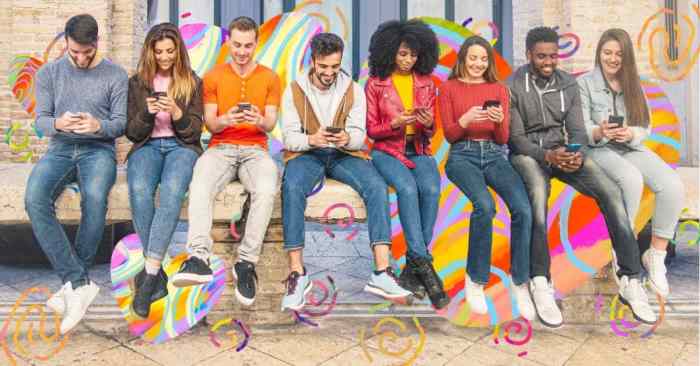Navigating the world of dating in the United States can feel like deciphering a complex code. From the diverse array of dating apps catering to specific demographics to the significant regional and cultural variations influencing relationship dynamics, understanding the nuances of American dating culture is crucial for both locals and newcomers. This guide delves into the intricacies of US dating, exploring the impact of technology, cultural backgrounds, communication styles, and socioeconomic factors on romantic relationships.
We'll examine how popular dating apps like Tinder, Bumble, and Hinge are used across different age groups, genders, and locations, highlighting the unique characteristics that draw users to each platform. Further, we'll explore the significant role of social media in shaping perceptions and influencing interactions, both online and offline. Beyond the digital realm, we'll investigate how regional differences, religious beliefs, ethnic backgrounds, and socioeconomic status shape dating norms, expectations, and relationship trajectories.
Dating App Preferences and Usage in the US

Source: datingapps.com
Dating App Popularity Across US Demographics
The popularity of various dating apps varies significantly across different US demographics, reflecting diverse preferences and priorities. While Tinder maintains a large user base, other apps cater to specific niches and user needs. The following table summarizes the primary user demographics and key features of three prominent dating apps:| App Name | Primary User Demographic | Key Features | Additional Notes |
|---|---|---|---|
| Tinder | Broad age range, generally considered more casual dating focused | Swipe-based matching, location-based discovery, basic profiles | Known for its large user base and ease of use. Often used for casual encounters. |
| Bumble | Slightly older demographic, often perceived as more relationship-oriented, women initiate contact | Swipe-based matching, women initiate contact, BFF and Bizz modes | Focuses on empowering women and fostering more meaningful connections. |
| Hinge | Users seeking more serious relationships, slightly older demographic | Detailed profiles, prompts encouraging meaningful interactions, focus on shared interests | Designed to facilitate deeper connections and long-term relationships. |
Gender Differences in Dating App Usage
Men and women often utilize dating apps differently, reflecting varying approaches to online dating and relationship goals.The following points highlight key distinctions in how men and women use dating apps in the US:
- Women tend to be more selective in their swiping and messaging behaviors, often prioritizing quality over quantity.
- Men generally send more messages and initiate contact more frequently, reflecting a potentially more proactive approach.
- Women may be more likely to prioritize safety features and carefully screen potential matches before engaging in conversation.
- Men may experience higher rates of rejection, leading to variations in app usage patterns and persistence.
- Both genders may employ different strategies to optimize their profiles and increase their chances of successful matches.
The Role of Social Media in US Dating Culture
Social media plays a significant role in shaping US dating culture, influencing both dating app usage and the development of relationships.Social media platforms often serve as a pre-dating screening tool, allowing individuals to assess potential partners' personalities, interests, and lifestyles before initiating contact on a dating app. Furthermore, social media can:
- Influence profile creation: Users often curate their dating app profiles to align with their social media personas, aiming for consistency and authenticity.
- Facilitate post-match interactions: Social media provides a convenient avenue for communication and relationship development after initial contact on a dating app.
- Shape dating expectations: Exposure to idealized relationships and lifestyles on social media can influence expectations and perceptions of dating and relationships.
- Impact relationship dynamics: Social media can both enhance and complicate relationships, potentially introducing jealousy, comparison, and other challenges.
- Provide a platform for public relationship announcements: Couples may announce their relationships on social media, highlighting the integration of online and offline aspects of modern dating.
Cultural Influences on Dating Behavior in the US
Source: lovetv.co
Regional Differences in Dating Norms
The United States' vast geographical expanse contributes to significant regional variations in dating culture. East Coast and West Coast dating scenes, for example, often present contrasting styles and expectations.- East Coast: Dating on the East Coast, particularly in major cities like New York and Boston, tends to be fast-paced and direct. Individuals are often more upfront about their intentions and less likely to engage in prolonged periods of ambiguous dating. There's a greater emphasis on established social circles and traditional dating etiquette.
- West Coast: In contrast, the West Coast, especially areas like Los Angeles and San Francisco, often exhibits a more laid-back and casual approach to dating. There's a greater acceptance of non-traditional relationships and a stronger emphasis on individualistic values. The focus might be more on experiences and shared activities rather than formal dating rituals.
Religious and Ethnic Influences on Dating Practices
Religious and ethnic backgrounds profoundly impact dating practices within the US. These influences range from the role of family in matchmaking to the level of premarital intimacy considered acceptable.| Cultural Group | Dating Customs | Family Involvement | Premarital Intimacy |
|---|---|---|---|
| White, Evangelical Christian | Often involves courtship, with a strong emphasis on shared values and religious compatibility. | High; family approval is often crucial. | Generally conservative; premarital sex is often discouraged. |
| Hispanic/Latino | Family plays a significant role; dating may involve group settings and introductions through family or friends. | High; family approval is frequently sought. | Practices vary widely depending on specific cultural background and religious beliefs. |
| African American | Dating styles vary greatly, reflecting diverse cultural backgrounds and socioeconomic statuses. Family and community connections can be important. | Level of involvement varies widely. | Practices vary greatly. |
| Asian American | Dating practices vary significantly based on specific ethnic background (e.g., Chinese, Japanese, Korean). Family may play a larger role in some communities. | Level of involvement varies greatly. | Practices vary greatly. |